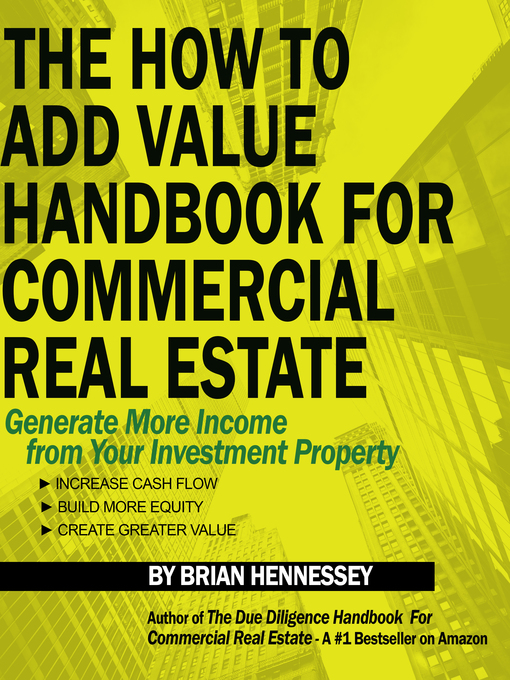From the author of a #1 Bestseller of commercial real estate books on Amazon, "The Due Diligence Handbook For Commercial Real Estate".
My objective in writing this handbook about creating value for commercial real estate is to help those owners and commercial real estate professionals discover the successful strategies I've encountered, learned, and practiced over my career. I wish I had this knowledge when I was starting out. It would have saved me from much frustration and a lot of trial and error learning.
When I read for instructional purposes, I want the "Cliff Notes" version. In other words, I want the 20% that will give me 80% of the results I'm looking for and not a bunch of minutia with 30 to 50 pages of fluff that I have to sift through to find the helpful tips or key points. I also include some examples and stories so that you can see how these work in the real world.
If you've read my book, "The Due Diligence Handbook For Commercial Real Estate" you know what I'm talking about. I attribute its popularity to the fact that it cuts through to the "meat" of the subject and gives the reader the step-by-step instructional information needed to conduct due diligence properly when buying investment properties. Your "golden" opportunity may turn to "lead" if you don't know where to find the hidden problems, undiscovered issues, and value creation opportunities an investment may hold. Much money can be saved and made by learning how to do it properly. Unfortunately, most investors and real estate professionals don't know how to properly conduct due diligence because they "don't know what they don't know."
The fundamentals remain the same for the most part, when it comes to adding value and leasing. This information can be used across the various genres of commercial real estate investments, whether it's office and industrial, retail or multi-family residential properties. I comment from time to time throughout the book on the different angles or strategies you may want to consider for the different property types, which I have obtained from my own background and experience of 30+ years in the commercial real estate industry—or from those I know to be the best at their particular specialty.
In this handbook you will learn:
*How to determine the best way to price the rental for your investment property to get it leased at the highest rent
*Tips and strategies to make your property attract tenants
*How to interview and hire the right people that will help you get your property leased and create more value
*How to structure your lease rate and terms to create the most value for your investment property
*How to incentivize tenants to lease in a down or over crowded market
*Essential analysis forms, proposal and lease form samples, tenant application and other forms that will help you to focus in and make it all easier
The good news is that these are very learnable skills that can be put into use right away to enhance your efforts to add value to your real estate investment.
For the more seasoned commercial real estate investors and professionals, my hope is to give them some of the insights that I have witnessed and experienced from being a commercial real estate broker doing tenant representation where I learned how many of the larger corporate tenants view their leasing objectives. Also, I will share valuable experience from my time as a landlord representative where I leased properties as a local leasing broker. I also spent time as a Vice President of Leasing for an investor who owned about 12 million square feet across the U.S,
where I had to learn local practices and customs, as well as...
